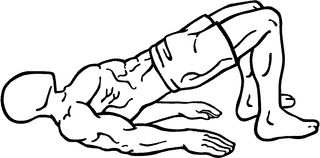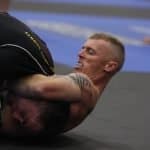Everyone was a beginner at one point of their BJJ journey. As a beginner it is important that you spend time on developing the basics and avoiding bad habits. Developing a solid base as a white belt will make you a better Jiu jitsu player. There are a few techniques that will help you as a beginner. These are passing the full guard, bridging, rear naked choke, guillotine, and double leg takedown.
Passing full guard
 When you are attempting to pass your opponent’s guard it is important not to rely only on force. This tactic may work against someone that is also a beginner, but not with higher belt ranks. Against a more experienced practitioner you will get swept or submitted. When working to open someones guard you have to be patient. Breaking down the full guard pass has two main points. They are opening the guard, and successfully passing it without getting swept. Beginners often rush and when passing without establishing a good base they get swept. With the gi you would be able to use the gi pants for control once you are able to open the guard. No gi is a bit different. There are no gi pants so you must rely on grip control. Your opponent’s legs will be harder to control. Stuffing or pinning the legs will be useful in no gi. Also, when working to pass make sure you keep a tall posture. Imagine that you have Arnold Schwarzenegger’s chest muscles.
When you are attempting to pass your opponent’s guard it is important not to rely only on force. This tactic may work against someone that is also a beginner, but not with higher belt ranks. Against a more experienced practitioner you will get swept or submitted. When working to open someones guard you have to be patient. Breaking down the full guard pass has two main points. They are opening the guard, and successfully passing it without getting swept. Beginners often rush and when passing without establishing a good base they get swept. With the gi you would be able to use the gi pants for control once you are able to open the guard. No gi is a bit different. There are no gi pants so you must rely on grip control. Your opponent’s legs will be harder to control. Stuffing or pinning the legs will be useful in no gi. Also, when working to pass make sure you keep a tall posture. Imagine that you have Arnold Schwarzenegger’s chest muscles.
Bridging

This technique is very valuable at any level. Perfecting it as a beginner will help you in the long run. Usually bridging is used for mount, and side control escapes. The key when you first start learning how to bridge is that hips are everything. Focus on using your hips when trying to create space. For example, when you are on bottom of side control avoid using your arms to create space. Use your hips to bridge then incorporate your arms. If you want to develop a strong bridge make sure you always go through the full range of motion. Half bridging won’t be as effective or strong. Your hips should reach full extension. Escaping from full mount by applying the bridge is very effective. If the person on top has good control your bridge has to be explosive and powerful. Another detail you have to worry about is blocking the knee or hand. That will depend on whether you bridge left or right.
Rear Naked Choke
One of the most effective submissions and hardest to defend. Number one skill to learn when learning this technique is imagining that you are a backpack. Wherever your opponent goes you follow. Always staying on their back. White belts sometimes tend to focus more on the hands or the choke itself. It is preferred you establish your leg hooks before going for the choke. This will allow you to have more control over your opponent. Most people will be worried about getting choked, so they will defend the hands. When they do that you can set your hooks in and continue working on the choke.
Guillotine
 If you have ever been to a grappling tournament you probably noticed that white belts love the guillotine. It just comes so natural to people. One common mistake is trying to only squeeze the neck without using the legs. Your legs play a major role in controlling your opponent and preventing them from escaping. Try to keep your opponent’s hips down while trying to pop their head off. A standing guillotine is also an optional finish, but if your opponent is bigger than you it may not work. These are the most common guillotines.
If you have ever been to a grappling tournament you probably noticed that white belts love the guillotine. It just comes so natural to people. One common mistake is trying to only squeeze the neck without using the legs. Your legs play a major role in controlling your opponent and preventing them from escaping. Try to keep your opponent’s hips down while trying to pop their head off. A standing guillotine is also an optional finish, but if your opponent is bigger than you it may not work. These are the most common guillotines.
Double Leg Takedown
In Jiu jitsu you score points for takedowns. Very effective in both gi and no gi. Some common mistakes are leading with the head and not changing levels. Also, not driving through your opponent. Bad takedown attacks look like suicide dives. Instead of diving you should try and keep a tall chest. Second, when changing levels do so using your legs and not breaking your back. If the takedown is not successful you may still be able to recover. A key factor in the double leg is driving through your opponent. Beginners tend to stop pushing upon contact with the other person. This lowers your chances of completing the takedown.
Final thoughts
Being a beginner is a great thing. You get to start with a clean mind and decide what you want to learn and maintain as knowledge. That being said choose wisely. Create good habits and avoid bad once. Don’t rush the process and focus on learning basics. Owning these fundamental techniques and getting a solid base will skyrocket your BJJ.

We care about Jiu Jitsu so much that we decided to create this page for all the people like us – that eat, breath and live the Jiu Jitsu Lifestyle! We truly hope our content will make every one of your days better, on the mat and off the mat!
